Of the genes identified, only early growth response protein 1 (egr-1), early growth response protein 2 (egr-2), and period-1 were similarly activated by DOI and LSD but were unaffected by lisuride. Their data support the hypothesis that agonists acting at the same receptor in vivo can induce unique patterns of signaling, thereby eliciting different behavioral responses. Unique behavioral and signaling responses elicited by each agonist studied in vivo appear to result from agonist-specific differences in the activation of multiple signaling pathways coupled to the 5-HT2A receptor.
C. Hallucinogen Persisting Perception Disorder

The authors suggest that 5-HT2A and 5-HT2B receptor subtypes mediate serotonin-dependent liver regeneration. It is the most severe type of headache, characterized by unilateral orbital or periorbital pain, accompanied by ipsilateral autonomic features in the nose, eyes, and face, with attacks lasting on average about 90 minutes. Cluster attacks can be acute or episodic, although the episodic form is most common (May, 2005). The most effective treatments have been 100% oxygen or subcutaneous sumatriptan (Becker, 2013). Recent evidence, however, has indicated that psychedelics may be more effective therapies for aborting acute attacks than conventional treatments. Online interviews of 53 cluster headache patients who had used either psilocybin or LSD to treat their condition found that 22 of 26 psilocybin users reported that psilocybin aborted attacks, and 25 of 48 psilocybin users and 7 of 8 LSD users reported cluster period termination.
How is NIDA advancing research on psychedelic and dissociative drugs?
Serotonergic projections from the dorsal raphe and supralemniscal nucleus (B9) were demonstrated to be the principal sources of are psychedelics addictive raphe projections to the reticular nucleus. In addition to the cortex, the thalamus and reticular nucleus of the thalamus may also be important sites of action for psychedelics. The 5-HT2A receptor is expressed in the thalamus, primarily in sensory and “nonspecific” nuclei (Cornea-Hébert et al., 1999). In the rat brain, significant levels of 5-HT2A receptor mRNA are expressed in the reticular nucleus, lateral geniculate nucleus, zona incerta, and the anterodorsal and ventromedial nucleus of the thalamus (Cyr et al., 2000). Pompeiano et al. (1994) also found 5-HT2A mRNA in the reticular nucleus, lateral geniculate, and zona incerta, but none in the midline or intralaminar nuclei. The thalamus, along with the amygdala, represents the major source of glutamate afferents innervating the neocortex.

C. Serotonin 5-Hydroxytryptamine 2A Receptor Expression in Primary Visual Cortex V1

The rabbit has not been widely used as an animal model to study the effects of psychedelics, but a number of experiments in this species have been carried out over the past decade, primarily in the laboratory of the late John A. Harvey. These studies have examined the rabbit head-bobbing response, as well as associative learning. They found that daily injections of the 5-HT2A agonists DOI, LSD, and the antagonist 2-bromo-lysergic acid-N,N-diethylamide (BOL) led to decreased cortical 5-HT2A receptor density but had no effect on density of cortical 5-HT2C receptors. Daily treatment with the highly selective 5-HT2A antagonist MDL11939 surprisingly increased 5-HT2A receptor density by 60%, with no effect on 5-HT2C receptor levels. DOI-elicited head bobs were decreased by prior chronic treatment with DOI, LSD, or BOL, whereas DOI-induced head bobs increased after chronic treatment with MDL11939, consistent with the idea that head bob behavior in rabbits is mediated by the 5-HT2A receptor. One of the prominent clinical features of psychedelic drugs is their effect on visual perception, even at relatively low doses.
|}

These surveys use the terms “hallucinogen” and “hallucinogen use disorder” and data from those surveys are reported below. Additionally, LSD can cause dizziness, sleepiness, increased blood pressure, loss of appetite, dry mouth, sweating, numbness, weakness, tremors, and impulsive behavior. The distortion of our subjective experience of self is a core part of the psychedelic experience, which also includes an increase in emotional empathy, the ability to respond to the mental state of others.
They did this in religious ceremonies to alter their minds and communicate with their gods. In South American culture, psychedelic use has historically been encouraged with the help of a shaman whose role is to guide you through the psychedelic experience. Julie Marks is a freelance writer with more than 20 years of experience covering health, lifestyle, and science topics. In addition to writing for Everyday Health, her work has been featured in WebMD, SELF, Healthline, A&E, Psych Central, Verywell Health, and more.
Physical Effects and Risks
Indeed, in much of the counterculture that uses these substances, entheogen has replaced psychedelic as the name of choice and we may expect to see this trend continue. They conclude that reductions in LFCOs appear to be a common signature of psychedelic drugs but note that further work is required to understand the relationship between BOLD signal and neuronal activity. This view is consistent with the information integration theory of consciousness (Tononi, 2004), which proposes that the thalamus and thalamocortical system play a key role in integrating information and ensuing consciousness.
- The advent of powerful brain imaging technologies such as fMRI, PET, and MEG has allowed rapid advances in our understanding of the areas and functions of the brain responsible for a variety of behavioral and cognitive tasks.
- The authors suggest that increased 5-HT2A density in the inferolateral temporal cortex may be the basis for visual hallucinations in PD patients and that 5HT2A antagonists may alleviate this symptom.
- The data of Wood et al. (2012) indicate that a common effect of psychedelics in the PFC may be to reduce the spontaneous coupling of single-unit activity with γ oscillations.

Or to pursue decriminalization efforts together with regulated access, allowing communities to decide for themselves how they’d like to structure their experiences. “Group therapy should be the norm because it dovetails with the psychedelic mechanism of action,” Plesa and Petranker argue. Allowing for more connectedness — literally, between people — in psychedelic settings could lay the foundation for stronger experiences of meaning, solidarity, and heck, maybe even collective action to emerge.
Early receptor mapping studies in rat brain using autoradiography with tritiated antagonist ligands identified brain areas with high 5-HT2 receptor density (Pazos et al., 1985). Highest binding was seen in the claustrum, but with high expression also in all laminae of the neocortex. The highest receptor density within the cortex was localized to a continuous band that included lamina IV and extended into lamina III, depending on the area studied.
What are hallucinogens?
According to a 2018 review, between the 1950s and 1970s, researchers carried out early phase studies investigating the effectiveness of classic psychedelics, but then discontinued their work. However, the evidence available from that time suggests that classic hallucinogens can be effective therapies, especially in the case of treating alcoholism with LSD. One would hope that we’d be able to learn from that and find a path forward where we can allow safe positive use of these drugs in clinical settings,” Dr. Merrill concludes. More recently—due to its prevalence in psychiatric research—psilocybin has a strong body of evidence backing its efficacy in https://ecosoberhouse.com/ easing symptoms of treatment-resistant depression and alcohol use disorder. For some, conventional therapy methods don’t offer effective treatment, even with medication, and it’s become clear that new options for care are necessary.

